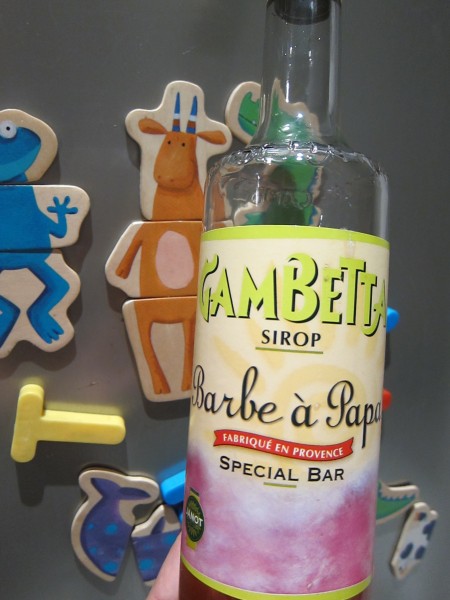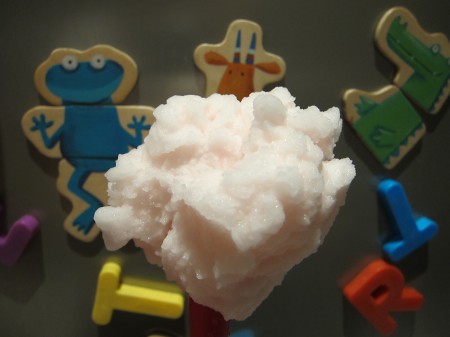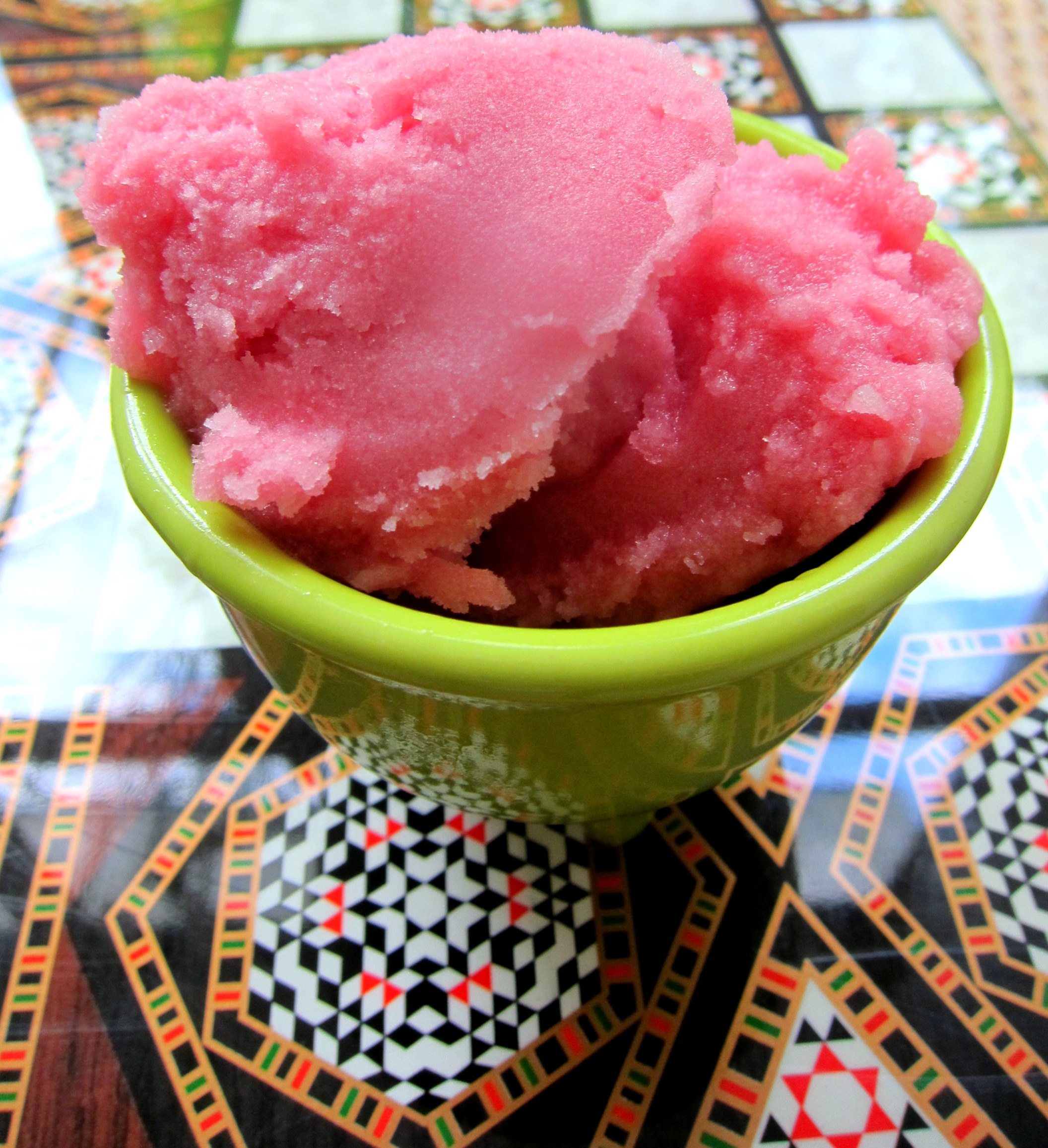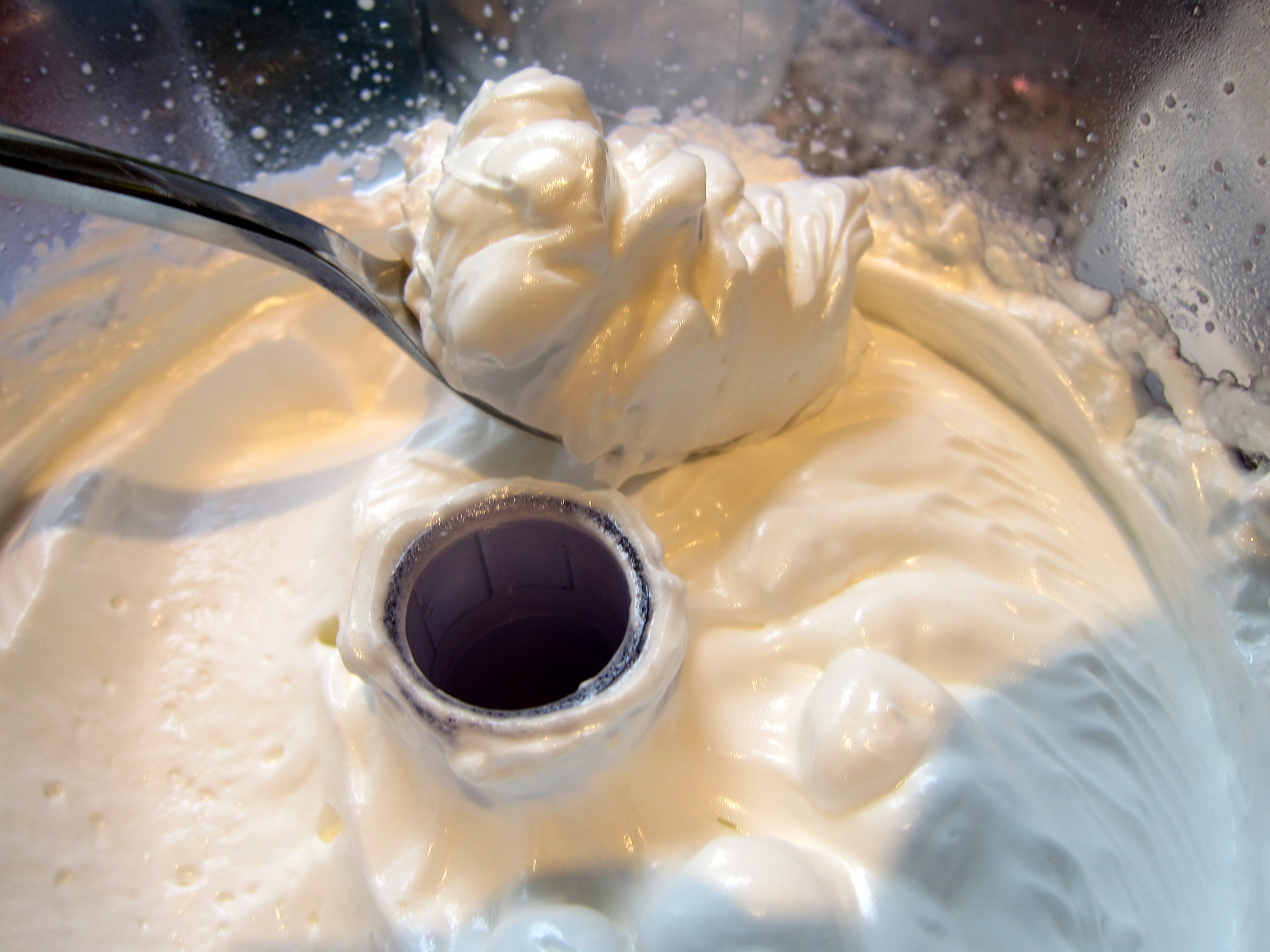Cotton Candy sorbet
Can the popular spun sugar treat really make it as (part of) a cold dessert? This is a question I have asked myself ever since I had a scoop of “cotton candy ice cream” in a restaurant a while ago.
As I remember it, that scoop came with a glaringly artificial colour, but there was actually something in the texture that (vaguely) suggested that a portion of cotton candy had been soaked in the dairy mix. But how to do it? The pastry chef who had prepared the treat had already gone home that night, so I got no help from the restaurant.
My initial plan was to simply incorporate some cotton candy into a neutral ice cream base, but it seemed a bit like an experiment doomed to fail: how would normal cotton candy stand a chance in the humid environment of a liquid ice cream base? After all, cotton candy is “only” spun sugar – heat sugar to a stage where you can make thin threads out of it, spin it around a stick and there you go (adding food colouring is, of course, an additional option). While searching for hints and formulas, I came across more and more recipes suggesting using “cotton candy syrup” as the highway to cotton candy ice cream.
But surely, a syrup would not be able to provide anything resembling cotton candy texture? I was highly sceptical. On top of that, in my part of Europe, I had never even seen any such syrup for sale.
However, one evening in a specialist food store, I suddenly discovered a bottle of French “Daddy’s beard syrup” (‘Barbe à Papa’ is the French term for cotton candy). As you can imagine, I could not resist the temptation.
Obviously, this syrup was destined for mixing strong drinks, but I figured that it would do nicely as long as it was cotton candy-flavoured.
Realising that a syrup would not be able to add any interesting texture-feeling of cotton candy, I opted to make sorbet rather than ice cream. Quite easy, since sorbets largely are made up of syrup.
This time, the sorbet would consist of nothing else but the sugary cotton candy syrup, appropriately diluted with some plain water. Obviously, the main challenge would be to avoid a too sweet syrup that would refuse to freeze properly.
Lacking more advanced instruments, I put my trust in the old “(floating) Egg”-test. Having calibrated the floating of the egg appropriately (thus having diluted the cotton candy syrup to a level of sweetness appropriate for sorbet production), I simply poured the mixture into the ice cream machine and began churning.
The result was a very sweet sorbet, with a slight flavour-touch of cotton candy. I must confess that I personally found the sorbet too sweet (after all, this is really a sorbet based on sugar syrup and nothing else:-). Risking to somewhat compromise the cotton candy-flavour, I would suggest adding some lemon juice if this should be served to adults;-).
The kids and their young friends, however, LOVED IT.
Next time, I think I will try to put some real cotton candy into a base of ice cream – how the cotton candy would survive the humidity is still a mystery to me but who knows? Perhaps some of the texture will manage to stay on somehow anyway …







I’m not sure if I’m missing something, but where’s the directions on how to make the cotton candy sorbet?
Dear Natalie,
The directions in this post are indeed few, as the ‘recipe’ is extremely simple: As I wrote, you basically take some ready-made (commercial) sugary cotton candy syrup and dilute it with an appropriate amount of plain water until the mixture reaches the appropriate “sorbet-sweetness level”.
Since the sugary sweetness of commercial syrups can differ quite a lot, you have to find this optimal level of extra water to be added on your own. However, if you get hold of a clean, fresh egg to help with the sweetness-estimates (the “Egg test”), you should have no problems to get it right 🙂
Best of luck!